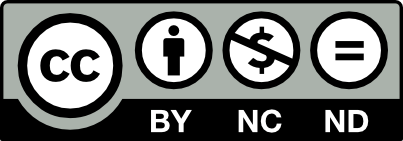This page is licensed under Creative Commons under Attribution 4.0 International. Anyone can share content from this page, with attribution and link to College MatchPoint requested.
The UT Austin Jumpstart Plan: What Every Parent of a Junior Needs to Know Now
This year, UT Austin broke records again. More than 90,000 students applied. Admit rates dropped across every college, with competitive majors like business, engineering, and biology turning away highly qualified applicants. The message from the Class of 2025 admissions cycle was clear—students who moved early, built intentional alignment with their majors, and showed impact in their communities had the strongest results. If your teen dreams of becoming a Longhorn, junior year is not the time to wait and see. It is the time to act. This is your jumpstart plan.

Build a Transcript That Signals Readiness
UT Austin places major weight on a student’s transcript. For many students, junior year is the final full academic record available at the time of review. That means course selection and grades this year matter deeply—especially for selective colleges within UT like McCombs, Cockrell, and Natural Sciences.
What stood out in 2025:
Admitted students typically carried five core classes at the most advanced level available. Competitive McCombs applicants had Pre-Calculus or Calculus, often paired with AP Economics. Engineering applicants took Physics and high-level math. Students applying to Natural Sciences leaned into lab-based science courses and calculus-track math.
What you can do now:
- Review your student’s fall schedule and ensure it includes rigorous courses in English, math, science, social studies, and language
- Make sure your teen is on track to complete Pre-Calculus or Calculus if they are targeting STEM or business majors
- Talk with your student about building consistent study routines and using teacher support early
- Ask the school counselor how class rank is calculated and where your student currently stands
Align Activities with Your Teen’s Future Major
UT Austin admits by major. The most successful applicants did not just explore activities they enjoyed. They also made choices that reflected curiosity, commitment, and growth in areas related to their intended field of study.
What stood out in 2025:
Engineering applicants joined robotics teams, took part in coding competitions, or built personal design projects. Business applicants showed leadership in finance clubs, launched entrepreneurial ventures, or completed business-focused summer programs. Biology applicants volunteered in health settings, worked in labs, or attended STEM camps. Across all colleges, alignment between activities and academic goals was a clear advantage.
What you can do now:
- Help your teen identify one or two majors they are excited to explore
- Support them in finding or deepening one activity that connects directly to that interest
- Encourage them to pursue a summer experience—camp, internship, online course, or project—that strengthens that connection
- Have them keep notes on what they are learning. These reflections often become the foundation of their senior essays
Use Testing as a Strategic Advantage
While UT Austin remains test-optional, the 2025 cycle confirmed that strong scores can help applicants stand out—especially in competitive academic environments. Many successful applicants submitted scores that reinforced their transcript strength and showed readiness for college-level work.
What stood out in 2025:
Admitted students to competitive colleges within UT often submitted SAT scores of 1400 or above or ACT scores of 32 or higher. Testing was especially helpful for students applying from large high schools or from schools with known grade inflation.
What you can do now:
- Have your teen take a full-length SAT or ACT diagnostic to determine which test suits them best
- Review UT Austin’s middle 50 percent score range and help set a realistic goal
- Schedule weekly test prep time, even if it is just an hour. Consistency matters more than intensity
- Plan for your student to take their first official test by early spring. This leaves time for a second attempt if needed.
Encourage Your Teen to Make an Impact in Their Community
UT Austin values students who contribute to the communities they are a part of. This is not about titles or prestige. It is about doing meaningful work in real contexts, whether in school, at home, online, or in their neighborhood.
What stood out in 2025:
Applicants were admitted with stories of mentoring younger students, creating resources for mental health, building community initiatives, or stepping up in family roles. Impact did not need to be public—it just needed to be purposeful.
What you can do now:
- Talk with your teen about what matters most to them and where they want to contribute
- Help them identify one way they can take action this fall—whether through service, leadership, or solving a local problem
- Celebrate progress, not perfection. Encourage reflection on what they are learning along the way
- Reinforce that this work is not just for college. It is part of shaping who they are becoming
Final Thought for Parents
Students who succeeded in this year’s UT Austin cycle did not wait until senior year to figure things out. They built momentum early, explored their academic interests with intention, and found ways to contribute beyond the classroom.
Junior year is the foundation. The jumpstart begins now.


